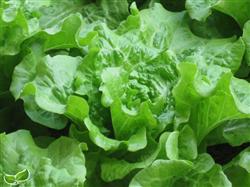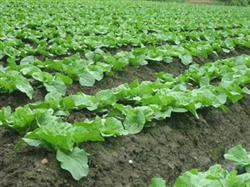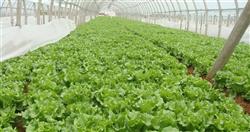How to manage growing lettuce in summer?

How to manage growing lettuce in summer? Please introduce the management method of summer planting, first of all, we should pay attention to fertilizer and water management. Due to high summer temperature, strong light, large ground evaporation and large crop transpiration, it is necessary to often water the soil at the initial stage of planting to keep the soil moist. Entering the rainy season from July to August, after each heavy rain, we should timely drain waterlogging and pour cold water to cool down in order to protect the leaves. In the later stage of growth, the water should be properly controlled and not watered 2-3 days before harvest to prevent cracking. Lettuce growth period is short, topdressing is mainly chemical fertilizer, but we should pay attention to increase the application of potassium fertilizer, so that nitrogen and potassium balance, about 15 kg each time. Secondly, we should pay attention to the prevention and control of diseases and insect pests. The diseases of lettuce in summer are mainly downy mildew, virus disease and gray mold, as well as Sclerotinia sclerotiorum, leaf spot and so on. Downy mildew can be controlled with 75% chlorothalonil 600 times, or 40% synergistic trichlorothalonil 500 times, 58% nail cream manganese zinc 500 times, Botrytis cinerea can be controlled with 50% Chlorothalonil 1000-1500 times, or 50% topiramine 500 times. The prevention and control of virus disease should be combined with the prevention and control of aphids, in addition to selecting disease-resistant varieties and disease-free varieties, it should also be combined with the prevention and control of aphids, such as pyrethrum, aphid pine or aldicarb in time to prevent and control aphids. In addition, attention should be paid to the prevention and treatment of physiological diseases and element deficiency. For example, boron deficiency in lettuce often leads to slow growth of veins and edges of new leaves, wrinkling and unevenness of leaf color, like symptoms of mosaic virus disease. In severe cases, leaf tips and edges are scorched, and terminal bud growth is inhibited or withered. Therefore, we should pay attention to the application of boron, all kinds of organic fertilizers contain boron, if necessary, increase the application of borax as base fertilizer or foliar spraying boron fertilizer. Summer cultivation, generally less or no ploughing, in order to prevent the increase of soil temperature. Weeding on the surface should be the main method for those who are not covered with plastic film. The weeds were generally weeded for 2 or 3 times in the early stage of growth. Enter August, when the temperature drops somewhat, can remove shade shed or sunshade net, enter natural growth state. Soft rot and cracking often occur in the late stage of lettuce heading. The soft rot is mainly caused by the high temperature in the ball. Therefore, it is not too early to remove the shade shed, and it is more appropriate to remove the shade shed when the average temperature of the day is below 20 ℃. The crack ball is mainly caused by too much soil moisture, so watering should be controlled in the later stage of growth. In addition, in order to prevent soft rot, it is best not to use human feces and urine as topdressing. The leaf balls of lettuce in summer are generally less, so they should be harvested in time. Late harvest, the leaf ball will not only grow, but will be longer and looser, reducing the quality. The harvest is usually in the early morning to prevent the leaves from wilting. Click for more lettuce planting techniques click to get more vegetable planting techniques
- Prev

How to grow Chinese cabbage in summer
How to grow Chinese cabbage in summer? Please give an introduction to the planting method of planting Chinese cabbage in summer: variety selection should choose early-maturing Chinese cabbage varieties that are resistant to high temperature, high humidity, disease and insect resistance and good quality. it is best to choose non-fluffy seedlings that can be pulled out at seedling time as varieties for sale, such as Xiafeng 40 and Xia.
- Next

What should we pay attention to when growing lettuce in summer?
What should we pay attention to when growing lettuce in summer? Please give guidance on growing lettuce in summer to pay attention to the following aspects: 1. Pay attention to fertilizer and water management. Due to high summer temperature, strong light, large ground evaporation and large crop transpiration, it is necessary to often water the soil at the initial stage of planting to keep the soil moist. It was rainy from July to August.
Related
- Where is it suitable to grow horseradish in China? it is expected to see the middle altitude horseradish in Alishan.
- How to prevent tomato virus disease reasonably? (Control methods included)
- Many people like to plant towel gourd on the balcony. What are the main points of this method and management?
- What crops can chili peppers be mixed with?
- Fertilization techniques and matters needing attention in Tomato
- What are the grafting techniques for peach seedlings in spring?
- Harm and control methods of root swelling disease of Chinese cabbage
- What are the pests of sweet potatoes? How to prevent and cure it?
- Symptoms, causes and Control methods of navel Rot in Tomato
- The cause of "Cucumber rotten bibcock" in Farmers' planting Cucumber and its Control Plan

